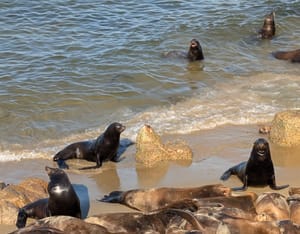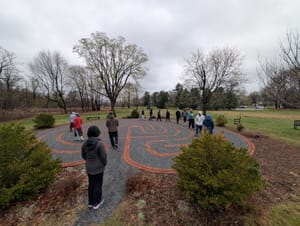The breaststroke has a faint sense of femininity attached to it these days. There’s the name, of course: Anything beginning with “breast” seems inevitably female, at least a little bit. But it’s also a slower stroke than the crawl, otherwise known as freestyle. You could use the breaststroke in a freestyle race—theoretically, you’re free to use any style you want—but no one would, because it’s so much slower. It’s also the stroke favored by people who want to savor things, to watch what’s going on, to keep their heads and their hair out of the water. It’s a grandmotherly stroke.
I’ve always liked the breaststroke because it’s so easy for me to breathe and to make forward progress while seeing where I’m going. When doing the breaststroke, I feel like I could swim all day. That’s never been true for the crawl. So I usually use it as a recovery stroke, to rest a bit, and I use it for looking around and getting my bearings. But I don’t generally use it that often, because, well: Slow. And grandmotherly.
But at one time it was the only stroke. When Capt. Matthew Webb made the first successful crossing of the English Channel in 1875, he used the breaststroke. The “American crawl” was known at the time, but it was considered too splashy and undignified. As a self-taught English swimmer he may not have known the crawl anyway. The breaststroke it was. And his was quite powerful, with wide, sweeping, powerful arm strokes, and a kick that somehow caused the soles of his feet to emerge from the water. He used it for a zigzaggy, tide-driven course across the Channel, covering about 39 water miles in 21 hours, 45 minutes, making history and turning himself into an instant celebrity.
Saturday I was on a much less ambitious swim, a three mile course from the Bay Bridge back to Aquatic Park with about 50 other members of the South End Rowing Club, accompanied by kayaks and zodiacs. We had a bit of an ebb current pushing us along, but it wasn’t exactly a powerful tide. You had to keep swimming, we’d been warned, if you wanted to get back to the cove of Aquatic Park before the tide turned and started pushing against you. And with water at 56 degrees Fahrenheit, you didn’t want to stop swimming anyway, or you’d get chilled.
About twenty minutes into the swim I’d gone comfortably past the Ferry Building, and the Disneyland-like buildings of Pier 39 were in sight, when the water started getting lumpier. It wasn’t exactly rough or choppy: There were maybe one-foot waves rolling directly toward us from the other side of Pier 39. They were big enough and spaced out in such a way that they were really annoying to swim into: They kept slapping the top of my head and making it hard to breathe. I couldn’t find a good rhythm that fit into this water, so I kept having to stop, breaststroke, and look around.
Eventually I just switched to breaststroke full time, swimming directly into the little waves. It turned out this worked very well: I could lift my head up high to see and to breathe between each wave, then I would put my head down and pull through the next wave, the water breaking over my back smoothly and easily. Lift, breathe, look. Duck, pull through, glide.
I kept thinking about Matthew Webb: If he could cross the Channel this way, I could easily manage a mile or more. So I said to myself with each push, “Matthew Webb.” Pull. “Matthew Webb.” Pull. Matthew Webb.
It worked: I made progress, and I found I was able to keep pace with another swimmer, a tattooed guy who I later learned was named Dave, who was taking more traditional freestyle approach to the water. We swam alongside each other for twenty or thirty minutes, and when we were finally even with the breakwater that protects Aquatic Park and Fisherman’s Wharf, the water calmed down enough that I could switch back to the crawl.
I made it in to the beach just fine, one hour and 10 minutes after jumping into the Bay at the bridge. Of course I used the freestyle to swim the last hundred yards or so. With all those people looking on, you wouldn’t really want to use the breaststroke for your glorious finish, now, would you?
Postscript: Other notable breaststrokers include Lord Byron and Roger Deakin, the incredibly observant poet of Britain’s swimmable waterways.
Maybe for my next post I’ll write about the virtues of the sidestroke, which serious swimmers really despise.



